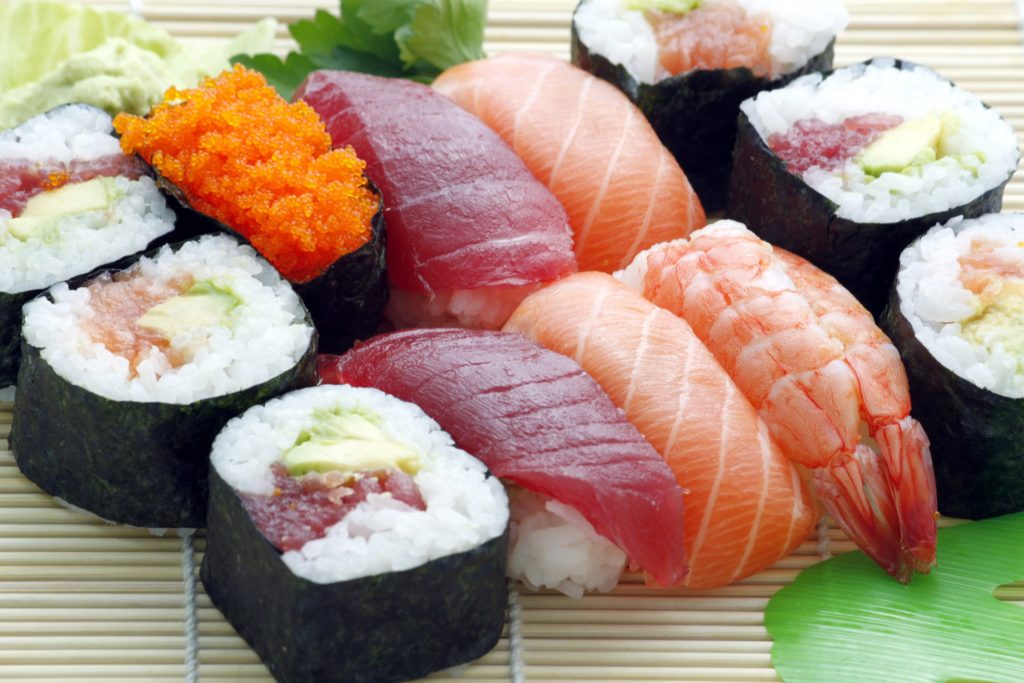Can’t believe I haven’t written about this one before – we see them both on all sushi place menus: what’s the difference between sushi and sashimi?
Definitions
Sushi: cold boiled rice moistened with rice vinegar, usually shaped into bite-size pieces and topped with raw seafood or formed into a long seafood-wrapped roll, often around strips of vegetables or raw fish, and sliced into bite-sized pieces
Sashimi: raw fish cut into very thin slices
Sushi
Sushi literally means “vinegar rice.” The vinegared rice is the key here – that’s what sushi has that sashimi doesn’t.
While sushi often contains raw fish, it doesn’t always, as with a California roll, for instance.
Sushi is simply vinegared rice that is mixed with other ingredients, which may or may not include raw fish. If there’s no rice, it’s not sushi.
Sashimi
Sashimi is raw sliced seafood which is usually served with a dipping sauce and is typically draped over a garnish like daikon radish.
Although the technical definition of sashimi only states fish, other sources indicate sashimi can be created from raw meat as well.
Conclusion
Sushi is vinegared rice paired with other ingredients, usually raw fish. Sashimi is raw fish with no rice that’s typically served over a garnish and with a dipping sauce.
See the difference between crab meat and imitation crab meat >>
Sources:
- Dictionary.com
- Diffen: Sashimi vs. Sushi
- Tastessence: 5 Basic Differences Between Sashimi and Sushi Everyone Should Know
- This One vs That One: Sushi vs Sashimi
